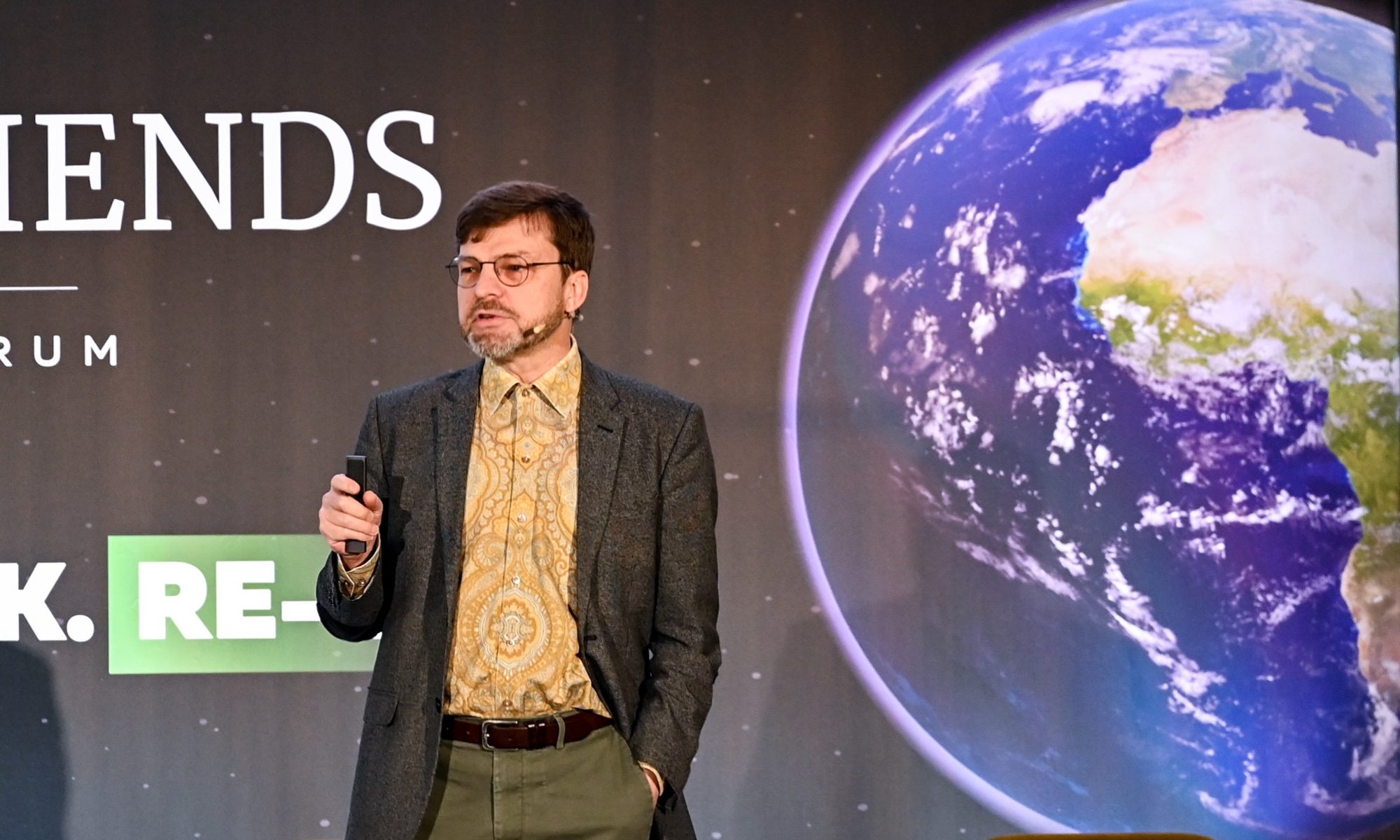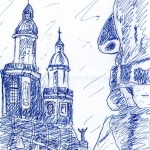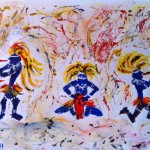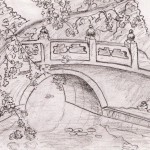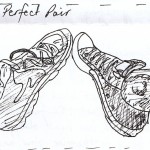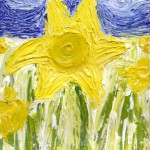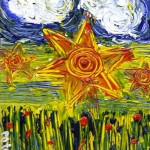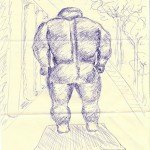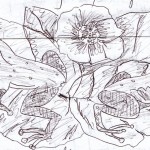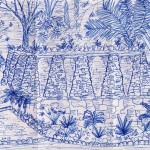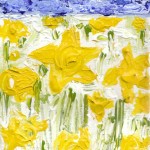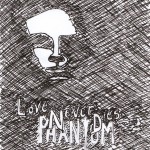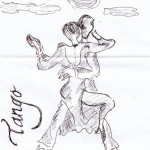Click on the thumbnail images to view the pictures in the gallery
The DNA Model of CSR 2.0
The DNA Model of CSR 2.0:
Value Creation, Good Governance, Societal Contribution and Ecological Integrity
Article by Wayne Visser
I believe that CSR 2.0 – or Transformative CSR (I also sometimes call it Systemic CSR, Radical CSR or Holistic CSR, so use whichever you prefer) – represents a new holistic model of CSR. The essence of the CSR 2.0 DNA model are the four DNA Responsibility Bases, which are like the four nitrogenous bases of biological DNA (adenine, cytosine, guanine, and thymine), sometimes abbreviated to the four-letters GCTA (which was the inspiration for the 1997 science fiction film GATTACA). In the case of CSR 2.0, the DNA Responsibility Bases:
- Value creation;
- Good governance;
- Societal contribution; and
- Environmental integrity
Hence, if we look at Value Creation …
Continue reading
[button size=”small” color=”blue” style=”download” new_window=”false” link=”http://www.waynevisser.com/wp-content/uploads/2012/04/inspiration_dna_model_csr_wvisser.pdf”]Pdf[/button] The DNA Model of CSR 2.0 (article)
Related websites
[button size=”small” color=”blue” style=”tick” new_window=”false” link=”http://www.csrinternational.org”]Link[/button] CSR International (website)
[button size=”small” color=”blue” style=”info” new_window=”false” link=”http://www.waynevisser.com/books/the-age-of-responsibility”]Page[/button] The Age of Responsibility (book)
Cite this article
Visser, W. (2011) The DNA Model of CSR 2.0: Value Creation, Good Governance, Societal Contribution and Ecological Integrity, CSR International Inspiration Series, No. 9.
Share this page
The Call to Responsibility
The Call to Responsibility:
Our Ability to Respond
Chapter by Wayne Visser
Extract from The Age of Responsibility
Quotes
We have the Bill of Rights. What we need is a Bill of Responsibilities. —Bill Maher
It is easy to dodge our responsibilities, but we cannot dodge the consequences of dodging our responsibilities. —Josiah Charles Stamp
Let everyone sweep in front of his own door, and the whole world will be clean. —JohannWolfgang von Goethe
In times like these men should utter nothing for which they would not be willingly responsible through time and in eternity. —Abraham Lincoln
The Meaning of Responsibility
Do you sigh when you hear the word responsibility? Perhaps responsibility is even a dirty word in your vocabulary. Perhaps you associate it with burdens and restrictions; the opposite of being carefree and without obligations. But responsibility doesn’t have to be a chore, or a cage. It all depends how you think about it.
Responsibility is literally what it says – our ability to respond. It is a choice we make – whether to be attentive to our children’s needs, whether to be mindful of the plight of those less fortunate, whether to be considerate of the impact we have on the earth and others. To be responsible is to be proactive in the world, to be sensitive to the interconnections, and to be willing to do something constructive, as a way of giving back.
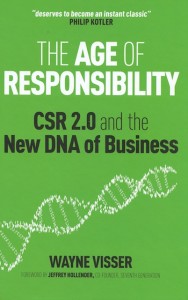 If we expect the right to fair treatment, we have a responsibility to respect the rule of law and honour the principle of reciprocity. If we believe in the right to have our basic needs met, we have the responsibility to respond when poverty denies those rights to others.
If we expect the right to fair treatment, we have a responsibility to respect the rule of law and honour the principle of reciprocity. If we believe in the right to have our basic needs met, we have the responsibility to respond when poverty denies those rights to others.
Taking responsibility, at home or in the workplace, is an expression of confidence in our own abilities, a chance to test our own limits, to challenge ourselves and to see how far we can go. Responsibility is the gateway to achievement. And achievement is the path to growth. Being responsible for something means that we are entrusted with realising its potential, turning its promise into reality. We are the magicians of manifestation, ready to prove to ourselves and to others what can happen when we put our minds to it, if we focus our energies and concentrate our efforts.
Being responsible for someone – another person – is an even greater privilege, for it means that we are embracing our role as caregivers, helping others to develop and flourish. This is an awesome responsibility, in the truest sense, one which should be embraced with gratitude, not reluctantly accepted with trepidation. Responsibility asks no more of us than that we try our best, that we act in the highest and truest way we know. Responsibility is not a guarantee of success, but a commitment to trying.
So why is responsibility seen by many as such an onerous burden? …
Continue reading
[button size=”small” color=”blue” style=”download” new_window=”false” link=”http://www.waynevisser.com/wp-content/uploads/2012/03/book_aor_chap1.pdf”]Pdf[/button] The Call to Responsibility (chapter)
Related pages
[button size=”small” color=”blue” style=”info” new_window=”false” link=”http://www.waynevisser.com/books/the-age-of-responsibility”]Page[/button] The Age of Responsibility (book)
Cite this chapter
Visser, W. (2011) The Call to Responsibility: Our Ability to Respond, In W. Visser, The Age of Responsibility: CSR 2.0 and the New DNA of Business, London: Wiley.
Share this page
The Age of Responsibility
The Age of Responsibility:
CSR 2.0 and the New DNA of Business
Paper by Wayne Visser
Abstract
This paper argues that CSR, as a business, governance and ethics system, has failed. This assumes that success or failure is measured in terms of the net impact (positive or negative) of business on society and the environment. The paper contends that a different kind of CSR is needed if we are to reverse the current direction of many of the world’s most pressing social, environmental and ethical trends. The first part of the paper reviews business’s historical progress over the Ages and Stages of CSR: moving through the Ages of Greed, Philanthropy, Marketing and Management, using defensive, charitable, promotional and strategic CSR approaches respectively. The second part of the paper examines the Three Curses of Modern CSR (incremental, peripheral and uneconomic), before exploring what CSR might look like in an emerging Age of Responsibility. This new CSR – called systemic or radical CSR, or CSR 2.0 – is based on five principles (creativity, scalability, responsiveness, glocality and circularity) and forms the basis for a new DNA model of responsible business, built around the four elements of value creation, good governance, societal contribution and environmental integrity.
Taking Stock on CSR
It is easy to dodge our responsibilities, but we cannot dodge the consequences of dodging our responsibilities – Josiah Charles Stamp
My starting point for any discussion on CSR – by which I mean corporate sustainability and responsibility, but choose whichever label you prefer (corporate social responsibility, corporate citizenship, sustainability, business ethics) – my starting point is to admit that CSR has failed. The logic is simple and compelling. A doctor judges his/her success by whether the patient is getting better (healthier) or worse (sicker). Similarly, we should judge the success of CSR by whether our communities and ecosystems are getting better or worse. And while at the micro level – in terms of specific CSR projects and practices – we can show many improvements, at the macro level almost every indicator of our social, environmental and ethical health is in decline.
I am not alone in my assessment or conclusion. Paul Hawken stated in The Ecology of Commerce (1994) that ‘if every company on the planet were to adopt the best environmental practice of the “leading” companies, the world would still be moving toward sure degradation and collapse.’ Unfortunately, this is still true. Jeffrey Hollender, founder and CEO of Seventh Generation, agrees, saying: ‘I believe that the vast majority of companies fail to be “good” corporate citizens, Seventh Generation included. Most sustainability and corporate responsibility programs are about being less bad rather than good. They are about selective and compartmentalized “programs” rather than holistic and systemic change’ (Hollender & Breen, 2010).
In fact, there are no shortage of critics of CSR. Christian Aid (2004) issued a report called ‘Behind the Mask: The Real Face of CSR’, in which they argued that ‘CSR is a completely inadequate response to the sometimes devastating impact that multinational companies can have in an ever-more globalised world – and it is actually used to mask that impact.’ A more recent example is …
Continue reading
[button size=”small” color=”blue” style=”download” new_window=”false” link=”http://www.waynevisser.com/wp-content/uploads/2012/06/paper_age_responsibility_wvisser.pdf”]Pdf[/button] The Age of Responsibility (paper)
Related pages
[button size=”small” color=”blue” style=”info” new_window=”false” link=”http://www.waynevisser.com/books/the-age-of-responsibility”]Page[/button] The Age of Responsibility (book)
[button size=”small” color=”blue” style=”tick” new_window=”false” link=”http://papers.ssrn.com/sol3/papers.cfm?abstract_id=1725159″]Link[/button] Social Science Research Network (website)
Cite this article
Visser, W. (2010) CSR 2.0 and the New DNA of Business, Journal of Business Systems, Governance and Ethics, Vol. 5, No. 3, p. 7, 2010. Also published on SSRN at: http://ssrn.com/abstract=1725159
Share this page
Costa Rica 2010 Notes
I am in Costa Rica now, or I should say San Jose. I immediately feel comfortable here, and I am trying to figure out why. Partly, it must be that I just love the tropics – the lush vegetation and colourful wildlife. And somehow that ‘pura vida’ (pure life) rubs off on the people, who are friendly and helpful. Another reason must be that this country and this city wears its colours on its sleeve. By that I mean that there is art everywhere – on the walls as murals, in painted tiles, and with the vibrant rainbow textiles.
Share This Page
Panama 2011 Notes
15 August 2010
I am on the bus, having just crossed the border into Costa Rica, a process that took about 3 hours. Apart from queuing in the dark until the border opened, and the usual passport checking, each bag had to be individually checked by hand (twice!). We also had a dog sniffing for drugs. Hardly surprising really, in this part of the world.
Now let me tell you about my tour yesterday. We visited both sets of locks on the Pacific ocean side. I suppose what I didn’t realise was how long the canal is – around 50 miles. It links a natural lake with the coasts. To take advantage of the lake, the locks raise the ships about 26 metres. It takes 22 hours to transverse the canal, and only Panamese pilots can do the navigation. The idea for the canal was first proposed by a Spanish king in the 1500s, but it wasn’t until the late 1800s that the French began construction.
Mostly, the labour was brought in from the West Indies and many thousands died of tropical diseases. The Americans took over after the French gave up, from about 1903 until it was completed in 1914. It was then owned and operated by the Americans until a revolution (by students) in the 1960s, after which there was a sharing arrangement. However, it was only in 1999 that the Americans finally gave the canal back to the Panamanians. As far as i can tell, this is when the country started to prosper, and probably accounts for all the ‘bamboo-like’ apartment blocks and hotels that have shot up.
There are a few things I grew to love about Panama in my short time there. It is such a colourful culture. For example, lots of the public benches are painted with bright scenes by the school kids. And then there are the psychedelic public buses, each unique and painted with fantasy and superhero montages (dragons, knights, cartoons, etc.). Some of these turn into disco buses at night, with flashing lights and music pumping. It made me laugh, seeing all these people dancing in the aisles (and no, I didn’t get on one!). What else? Ah yes, fresh mango slices with salt, pepper and vinegar. Yumm!
Looking out the window now, we are unmistakably in the tropics, a green mosaic of palm plantations and natural forests – my kind of paradise (except for the things that buzz and bite! I saw some humongous specimens at the Panama Canal museum yesterday).
Share This Page
Brazil 2010 Notes
31 July 2010
I am loving being in Rio. I guess it has to do with the warm weather, the beach and the surrounding mountains. It all feels more natural and relaxed. I can see why it has a reputation for ‘fun in the sun’. I write this from the botanical gardens. They are a real oasis of green and shade. I walked this morning from the hostel and around the lagoon (Lagoa Rodrigo de Freitas), as far as the gardens. The path around the lagoon (which is more like a lake) is about 7.5 kms and a great favourite for walkers, joggers, bikers and skaters.
The amazing thing about Rio is that almost wherever you are, there is the backdrop of the giant stone edifices that are the mountains surrounding and interspersing the city. Often, there is also the sight of water, beaches and forests. That is not to say there is a shortage of concrete. This is a city of about 9 million people. But the buildings and the people are embedded in natural beautiful surroundings. The Tijuca Forest, of which the Botanical Gardens form a part, and which extend to the top of the Christ mountain, is the largest urban forest in the world.
The other thing I’ve noticed is that people don’t hassle or hustle you. There are a few hawkers and traders on the streets and beaches, but they are very passive. I’m sure I’m imposing stereotypes, but it feels like everyone just ‘gets’ that there’s more to life than work and money. Of course, Brazil has had at least a decade of strong economic growth, so I’m sure that helps. I’m also sure that the millions who still live in favelas are far from content, even if things are improving.
The cafes here are also interesting. First, there are more juice bars than coffee shops, which makes sense in a place where the temperature seldom drops below 15 degrees. But also, the cafes are so unpretentious – scruffy even. Just small holes in the wall and plastic chairs on the pavements. It’s almost as if the important thing is the people, the company and the food/drink, not the trappings.
I should mention that I am competing with buzzing things for my drink, which is called Guarana Antarctica, a classic soda in Brazil made from berries from the Amazon. There is certainly no shortage of buzzing, biting things in Rio, and it must be worse the closer to the tropics and the rainforest you get. Yesterday’s tour was breathtaking. I count myself so fortunate to have the opportunity to see such beautiful places in the world.
Share This Page
Argentina 2010 Notes
12 July 2010
Having arrived and settled into my accommodation in Buenos Aires, I walked for 4 or 5 hours around the city. It is a massive city, quite built up and busy. However, the pedestrianised areas are nice, with little shops and traders. I managed to find an artist that paints tango dancers, so I bought a painting. Speaking of tango, I plan to go to a show on Saturday. This is, after all, the home of Argentinian tango.
Yesterday, of course, I watched the World Cup Final. In the end, I decided to watch it on a giant public screen in the city centre and, as expected, the atmosphere was fantastic. Most were Spanish supporters and I got some great photos of their flag-waving celebrations; even a guy in red tights! So now it is over for another 4 years. I am so proud that South Africa managed to pull it off with any major incidents or problems.
I discovered some great sculptures yesterday, including a massive flower, which is maybe 3 storeys high. I might try to sketch it sometime over the next 2 weeks. Even the hostel has some creative inspiration. There reception desk is made from a green scooter!
19 July 2010
I am having a latte before my tour bus of the city leaves in an hour. It’s been a busy few days with workshops and talks on Wednesday, Thursday and Friday. One of the highlights outside of work has been visiting a place called Caminito. It was always a poor area, with houses mostly made of corrugated iron, near the city docks. Then about 10 years ago, some entrepreneurs decided to celebrate the diversity and lively culture of the place, so they opened restaurants and markets and played music on the streets.
Now it is a bit of a tourist destination but, like Camden in London, retains its vibrancy. The houses and restaurants are painted all different bright colours because originally people painted their houses with whatever paint was left over from painting the ships.
At one stage, the government wanted to build big walls to block off this emerging tourist spot from the surrounding poor houses, but one of the restaurant owners (of El Paraiso, which I’d definitely recommend for a meal) managed to stop them, saying it was part of the story and the charm. Besides, local artists could paint murals on the walls of the surrounding houses. It’s a great story of social enterprise and urban renewal.
I am on my way out to do an interview for a magazine, so I will end off here.
23 July 2010
This is my last night in Argentina. I am just back from a radio interview. I have had a great visit in Buenos Aires – busier than expected, but that’s a good thing.
There is a nice vibrancy about the city, especially in some of the restaurant hotspots. (Eeek! I just ordered ‘limonade’, which thought was lemonade and it turns out it is pure lemon juice!).
Anyway, as I was saying, I think B.A. is good for socialites and night life. I am a little sorry I couldn’t travel out of the city, either to Patagonia in the south, with its glaciers or the forests and waterfalls in the north.
What else can I tell you about Argentina? If it’s not red and bleeding, they don’t eat it! Not really a place for vegetarians.
Share This Page
Chile 2010 Notes
26 June 2010
I am staying at La Casa Roja hostel in Santiago. I took a little walk around the neighbourhood. To be honest, it’s quite run down – lots of graffiti, crumbling buildings and general urban decay. This is most likely a story of poverty rather than neglect. Just a few blocks from the hostel, I saw a man ‘sleeping rough’ on a bench. These are the real homeless and I wince to think of people like him outdoors at night when temperatures are sub-zero.
Tomorrow, after the football, I will take a walk downtown (fortunately we are close). I will probably head for the Arts & Culture Museum, and take it from there. It is my favourite part of any trip – discovering a new city, soaking up the urban delights, practicing a kind of cultural osmosis. I far prefer this slow, partial approach – getting intimate with my local surroundings – rather than rushing around with a ‘must-see, must-do’ tourist checklist.
27 June 2010
I took a walk downtown and discovered a castle – Santa Lucia. It’s on a little hill and has fantastic views of Santiago, including the backdrop of ice-capped mountains. Many photos later, I walked on to the Art Gallery. There were a few unusual sculptures, but not many paintings that grabbed me. The exception was a portrait of a Chinese coal miner. They also had lots of historical photos from the late 1800s, which gave some insight into a bygone, pre-Fordian era. The best one was of a group of kids, each with a different expression on their faces.
After the gallery, I walked to the main city square. By then, the sun was setting and I arrived just in time to witness a religious procession – a few hundred people, most with candles, some with banners of the Virgin Mary, and some in religious robes. The priests leading the march were swinging incense, and somewhere in the middle was an altar with a statue of Jesus. Then bells tolled and hymns played over the speakers of a van set up for the purpose. Everyone joined in singing, including spectators. Quite touching really, even though the religious practices themselves hold no meaning for me anymore.
The cathedral itself is on the square, so I went in and drifted a while in its reverential ambience. The square is also the place for street artists and buskers. Before leaving the square, I went over to listen to a singer who had drawn a bit of a crowd (Precila Guzman; I bought here CD to remember the moment). Some of the people were watching, but most – young and old – were spontaneously dancing. I was almost moved to tears, to see such natural joy, such celebration of life. It is one of the things I love about Latin culture. Music moves them, literally.
05 July 2010
I am staying for a few days in Valdivia with Manfred Max-Neef (“barefoot economist” and author of Human Scale Development). It took us 10 hours to drive from Santiago – very picturesque, especially with the Andes. The city is right on the sea, with a massive river going through it, and the university (of which Manfred was President a few years ago) is on an island.
Valdivia was the site of the worst earthquakes in recorded history in the 1960s (much worse than the one they had in Chile earlier this year, which was bad enough). As a result of all the subsidence (about 3 metres), a lot of the city became a wetland. This attracted all kinds of birdlife, including the rare black-necked swan. Unfortunately, due to pollution, they all died or relocated to other parts. Now, as I look out the window from Manfred’s study, there are 2 garden sculptures of these swans, which he keeps in memory of their brief period of abundance.
We took a brief drive around the campus, which is beautiful; lots of trees. Unfortunately, it is raining, so we can’t go for a walk in the Botanical Gardens. Apparently, a big storm is coming. The office here has a view over the river.
I am once again struck by how local and immediate life is. Collecting experiences is all well and good, but what we are doing now, in this moment, how we are feeling, who we love and are loved by – only these things keep us content and motivated. In a sense, we have to keep on creating the means of our own happiness, as if life is a river in which we always must have an oar in the water if we don’t want to be swept away.
Share This Page
New Zealand 2010 Notes
19 June 2010
I arrived in Auckland after marathon flights from China to Greece and then to New Zealand. Luckily, the jetlag is not too bad, as the time zone here is not too different from Shanghai, and I wasn’t in Athens long enough to re-adjust to European time. I am staying with family in the quaint village of Howick.
One of my discoveries in Howick was a quaint coffee shop called Cafe Paris. How would I describe it … eclectic! The walls are crammed with an odd, colourful collections of paintings and art – flying pigs, lavender fields, a family at the beach, a musical trio (tuber, whistle and violin) and a Rembrandt/Renoir. Also little ornaments on the sills: tortoises, cats, mice, a hippopotamus, a penguin, a pig, a pelican, horses and a fat lady in a swimming costume. From where I am sitting, I can see 4 mirrors (2 heart-shaped) and 6 clocks! I could go on and on. Very quaint.
I went to a wonderful classical concert the night before leaving for Wellington, featuring the Sibelius violin concerto and Grieg’s Peer Gynt Suite, which was simply divine. Before that we drove up to the top of Mount Eden, which is a volcano crater on the edge of Auckland city – you will have seen it on one of the photos; it is all grassed now. In the morning, we took the ferry to Waiheki island, where we walked around the craft markets. It has a real village / hippie feel about it. We also managed to squeeze in a visit to the tranquil Fo Guang Shan Buddhist temple.
At the airport, I found some New Zealand music – a soprano called Kiri Te Kanawa and a modern Maori singer called Maisey Rika, who reminds me a bit of Freshly Ground and Nora Jones.
22 June 2010
I am sitting in the cafe in Te Papa (The People), which is the museum in Wellington. It is an impressive space with some stunning exhibitions, especially of the Maori and islander history, culture and art. Most remarkable of all (for me) are the wood carvings. I think the detail and quality surpass anything I have seen anywhere else, except perhaps Thailand.
Interestingly, the carvings, which are mainly masks, draw a lot of their inspiration and beauty from the tattoo art of the tribes, which is also exquisite. Apart from traditional culture, the museum also tells the story of colonialism. I will copy some of the treaty ‘Her Majesty’ entered into with the Confederation of Tribes. It is so blatantly exploitative as to almost seem like a joke.
25 June 2010
I have had a good day in Christchurch. This morning, I met with Jye Lu, a PhD student in CSR. We found a coffee shop for breakfast, then she showed me around the city, including the Canterbury University campus and the beach. The weather was perfect for sea-photos – overcast but with bright sun reflecting on the waves and shoreline. I managed to get a few photos of the seagulls in flight and reflected on the sand. Jye then took me to a discount store that sells outdoor clothing, so I could buy gloves, a scarf and a beanie, plus a fleece. Now I’m all geared up to face the South American winter!
As I write this diary, I am in Annie’s restaurant, at the Christchurch Arts Centre, sitting next to a log fire. I just had a delicious winter vegetable soup with home-made bread, and now I am sipping a port and scribbling away. The Arts Centre here is quite lovely. It used to be the university campus and all the buildings have an English abbey kind of feel to them. There are numerous galleries and also studios where you can watch the artists at work. One of the most interesting is someone who does ‘stone kinetics’ – essentially photography of male models in various poses with stone sculptures.
